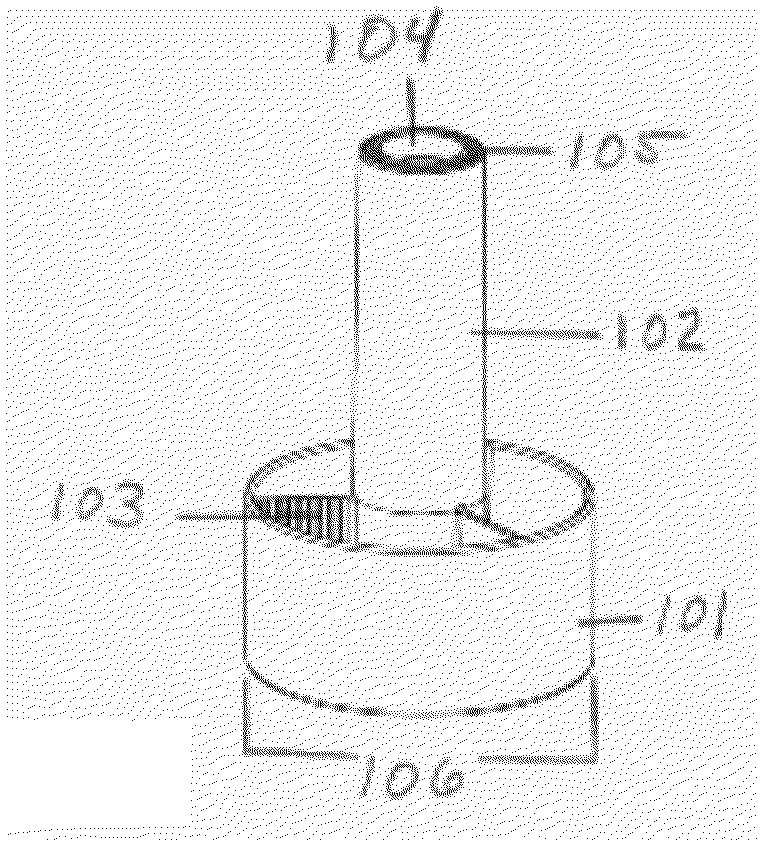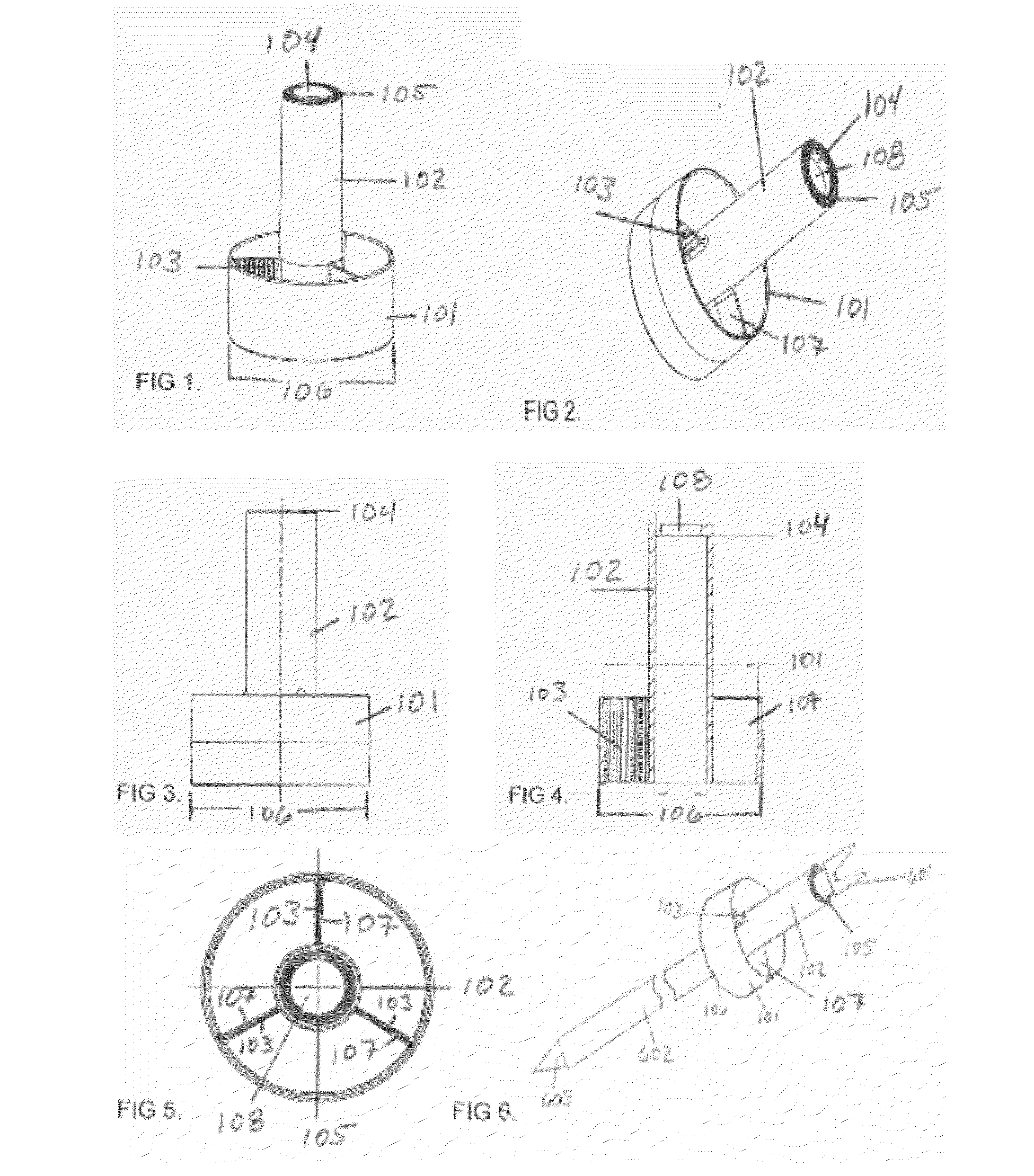Annular Arrow Fletch
a technology of annull arrow and arrow head, which is applied in the direction of arrows, weapons, projectiles, etc., can solve the problems of time-consuming process, inconvenient traveling and storage of arrows, and inconsistencies in spacing and angles, so as to improve the stability of arrows or other projectiles, eliminate inconsistencies and costs, and facilitate the effect of traveling and storag
- Summary
- Abstract
- Description
- Claims
- Application Information
AI Technical Summary
Benefits of technology
Problems solved by technology
Method used
Image
Examples
Embodiment Construction
[0028]Although the present embodiments have been described with reference to specific example embodiments, it will be evident that various modifications and changes may be made to these embodiments without departing from the broader spirit and scope of the various embodiments.
[0029]A conventional arrow comprises a tip, a shaft, and a prior art stabilization system comprising a plurality of glued fins as feathers, veins and or fletching's. The fins are fixed to the shaft and are easily damaged or lost through contact with other surfaces, e.g., with the bow used to launch the arrow or with butt material (backing, bales, man made targets or dirt designed to stop and hold arrows) of a paper target, or with a game animal when hunting. The aft end of the arrow may comprise a recess (not shown) formed therein for engagement (e.g., via a interference fit) with an arrow nock that secures the arrow in place on a bowstring before launch, e.g., by disposing an arrow nocked to a bowstring (not s...
PUM
 Login to View More
Login to View More Abstract
Description
Claims
Application Information
 Login to View More
Login to View More - R&D
- Intellectual Property
- Life Sciences
- Materials
- Tech Scout
- Unparalleled Data Quality
- Higher Quality Content
- 60% Fewer Hallucinations
Browse by: Latest US Patents, China's latest patents, Technical Efficacy Thesaurus, Application Domain, Technology Topic, Popular Technical Reports.
© 2025 PatSnap. All rights reserved.Legal|Privacy policy|Modern Slavery Act Transparency Statement|Sitemap|About US| Contact US: help@patsnap.com


